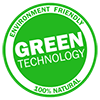Ozone Used for Odor Control and Removal
Ozone is able to purify the air and, therefore, remove odors. It could be a car, cabinet, fridge or your living room, an ozone generator is capable of removing odors and purifying the air, eliminating microorganisms, such as viruses and bacteria.
If you want to know how ozone is a potent air purifier, just scroll down and you’ll find your answer!
Ozone is a highly reactive molecule and is very quick to react chemically with particles that it comes into contact with in the air or even on surfaces. Ozone is an excellent option for odor control and removal.
It can potentially change the chemical composition of some substances that are present in the air because of its sterilizing power.
It is used against bacteria, virus, microorganisms and fungi, that cause unpleasant smells.
How does it work?
Ozone removes odors by chemically changing the structure of the molecules that are creating bad smell. It is mean that ozone reacts with any foreign molecules or microbes in its surrounding environment, eradicating them.
The molecule attaches itself to any contaminant microbe, neutralizing it and eliminating it. Ozone can be more effective in removing odors than other cleaning techniques.
Furthermore, this powerful agent eliminates the odors and microorganisms very quickly, effectively and without leaving behind any chemical by-products. By using ozone, it is possible to eliminate the spread of bad odors as well as significantly improving the hygiene of any area.
Ozone must be handled appropriately, following the safety standards and the right levels, and this way become the best odor-removing tool that everyone can use. It will destroy any organic material, including any kind of odor.
This includes bad smell such as mold, mildew, tobacco smoke, garbage rooms, food smell or even walls, ceilings, carpet fibres, gaps between floorboards, cracks in walls, and more. Ozone is able to penetrate into these areas and destroy the bad smells that it finds there.
Ozone treatment is an environmentally friendly and efficient method that will eradicate unpleasant odors leaving a fresh smell in the air.
An ozone generator is the ideal solution to purify the air. This odor control unit system is a machine that generates ozone and releases it in proper amounts in the room or house. You can see our offer for ozone generators below, in the products area.
In order to purify and deodorize the air in a space, a small concentration of ozone is sufficient, between 0.02 and 0.08 PPM, however, to obtain the desired results with this concentration it is necessary to maintain this ozone value for a longer period of time. The actual concentration needed to be maintained in a space depends on the presence of people, type and nature of the odor, criticality of the area, duration needed to purify and extent of the bad smell. If people and animals are not within the space to be treated, higher concentrations can be used to obtain faster results.
According to OSHA standards, when people and animals are in a space, the ozone concentration must not exceed more than 0.1 PPM for eight hours or more per work day, and no person should be exposed to a maximum concentration of ozone greater than 0.6 mg/m³ (0.3 PPM by volume) for more than ten minutes. According to ASHERE, the ozone concentration limit where people and animals are present is 0.05 PPM.
Some Odors removed by Ozone
Sweat or body odor;
Food smells;
Pets;
Mildew;
Mold;
“Locker rooms” smell;
Urine of animals;
Public toilets;
Garbage rooms;
Smoking Rooms;
And much more.
Benefits
Destroys bacteria, virus, parasites and microorganisms in the air;
Sterilizes spaces;
Prevents mold and mildew;
Removes bad odors;
Natural and efficient method;
No chemical residue remains;
Ozone naturally decomposes to oxygen;
Leaves fresh areas;
Environmentally friendly.
Scientific Articles
EMMANUEL I. EPELLE, ANDREW MACFARLANE, MICHAEL CUSACK, ANTHONY BURNS, JUDE A. OKOLIE, WILLIAM MACKAY, MOSTAFA RATEB, MOHAMMED YASEEN | February 15th | Ozone application in different industries: A review of recent developments
IOA (The International Ozone Association) | 2021 | Air Treatment
LEXUAN ZHONG, FARIBORZ HAGHIGHAT | January | Ozonation Air Purification Technology in HVAC Applications
KARIN FOARDE, CARY EATON | December | Ozone Antimicrobial Efficacy
MARK CARLSON, THEPING CHEN, CHRIS MCMEEN, MEL SUFFET, MIAOMIAO ZHANG | February | Tacoma controls tastes and odours with ozone
LAWRENCE B. KILHAM, RANDALL M. DODD | August | The application of ozone for air treatment: Case study of a bingo hall HVAC system










